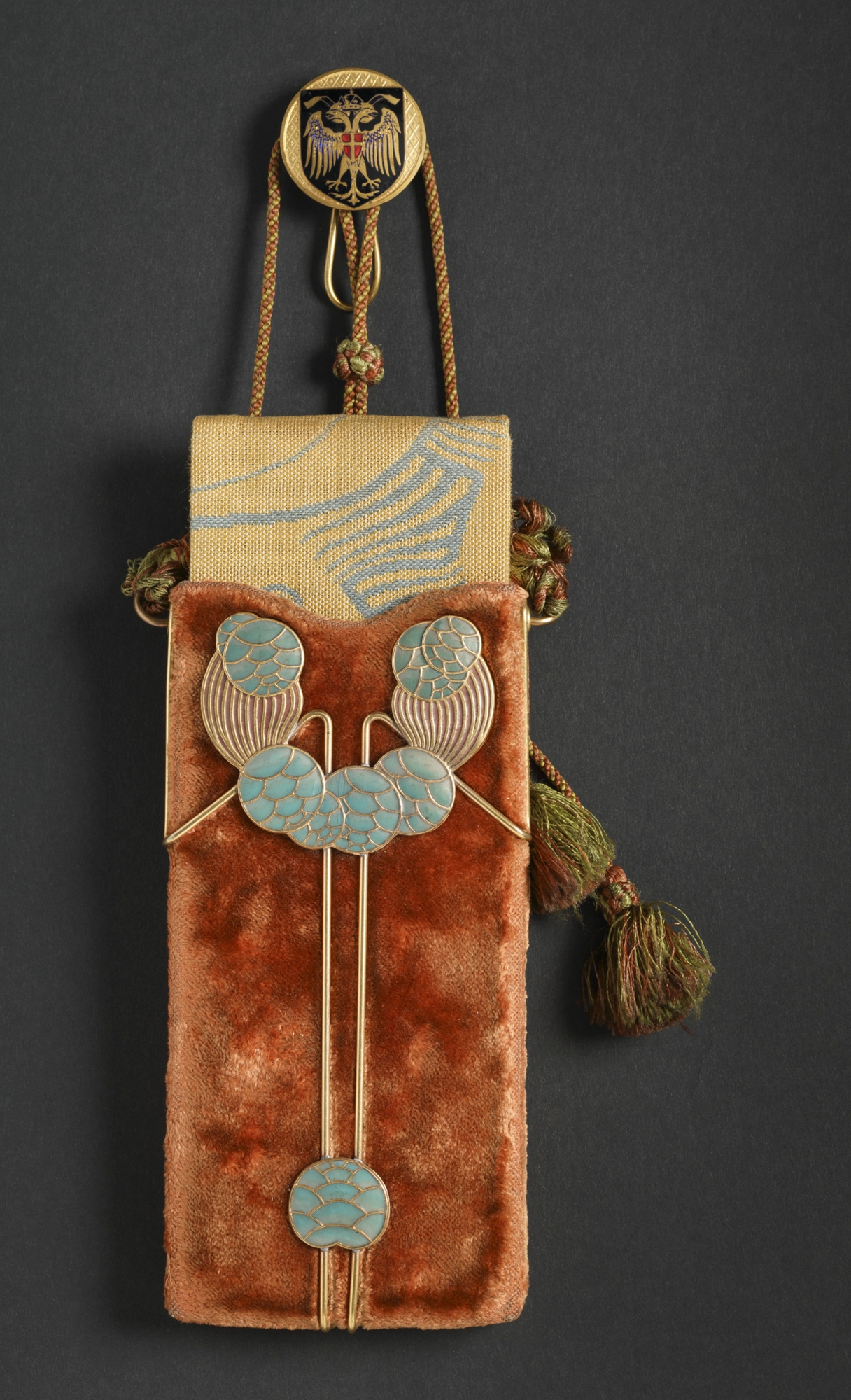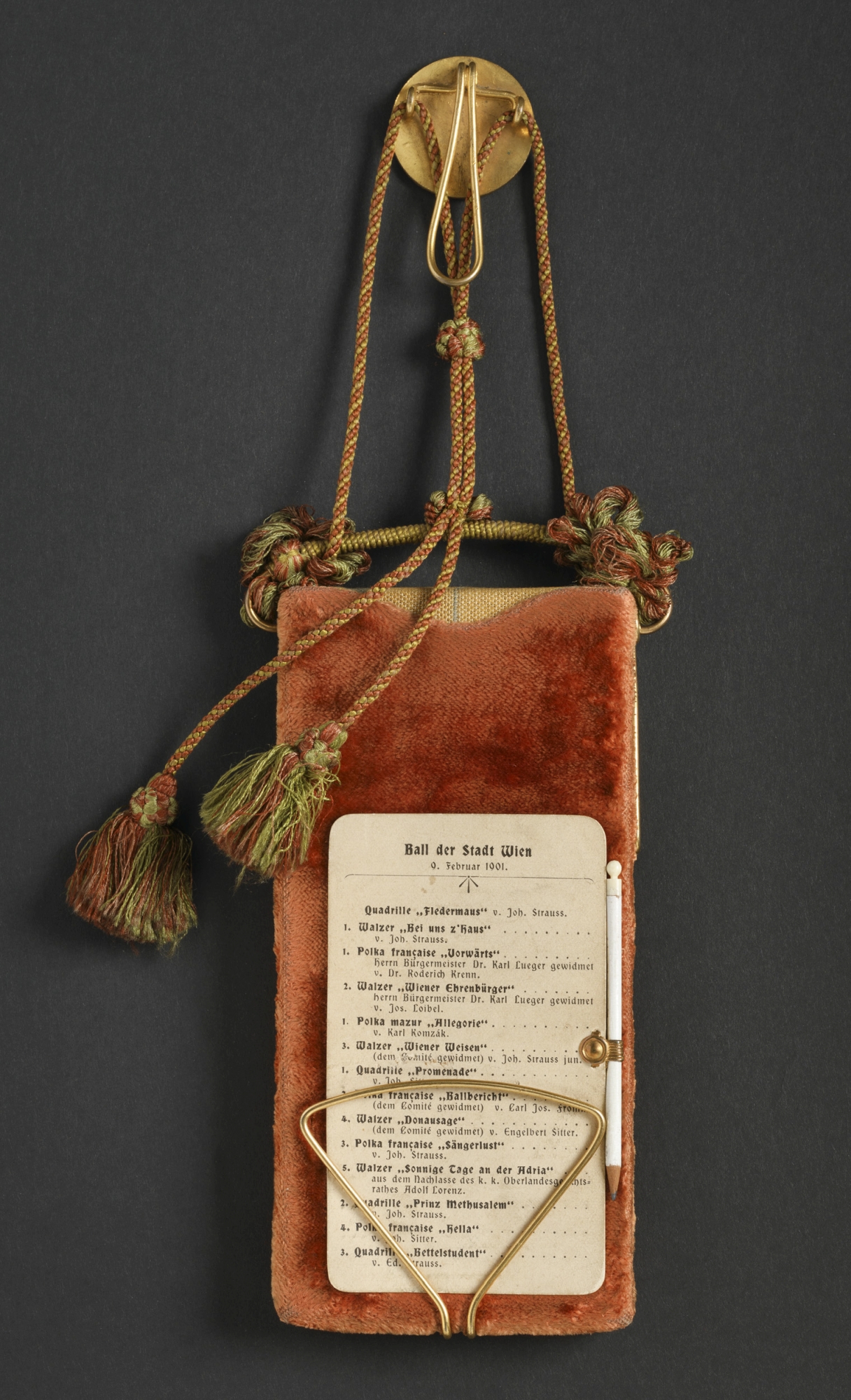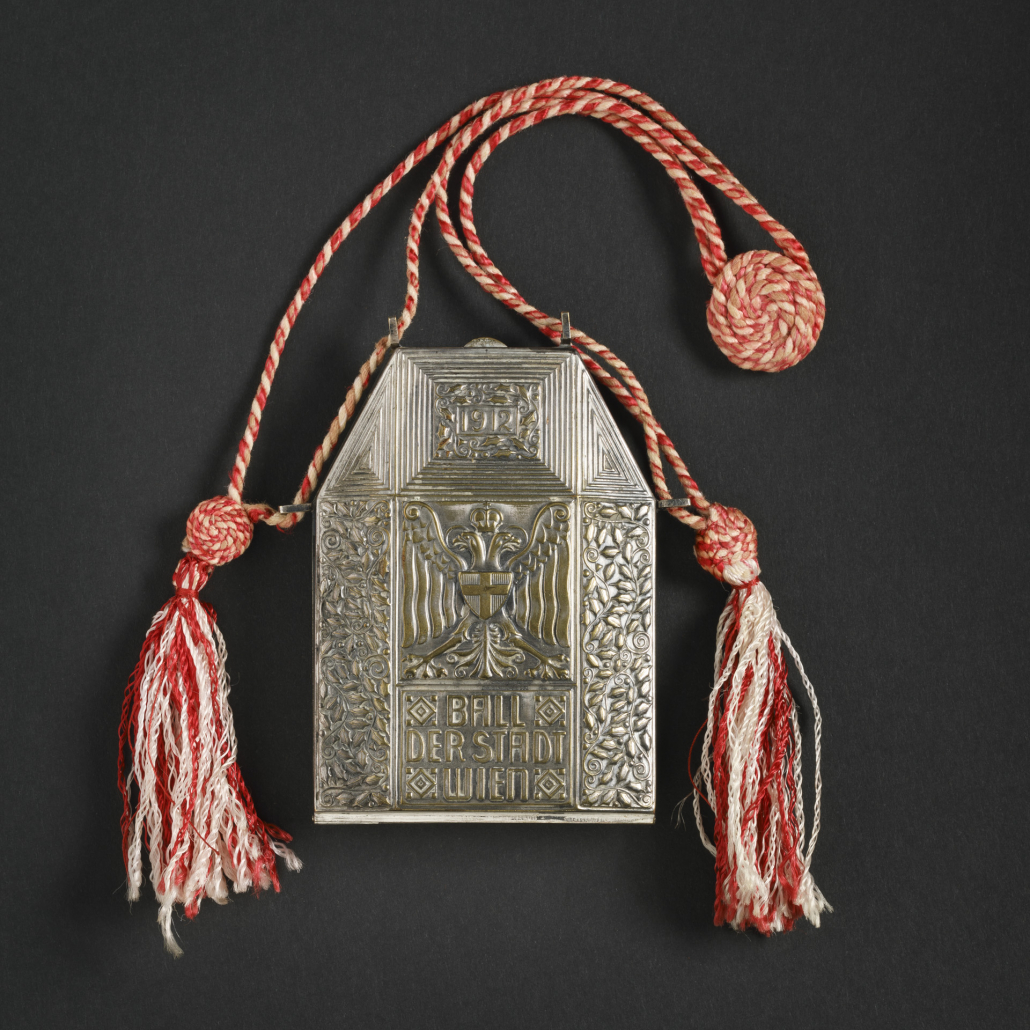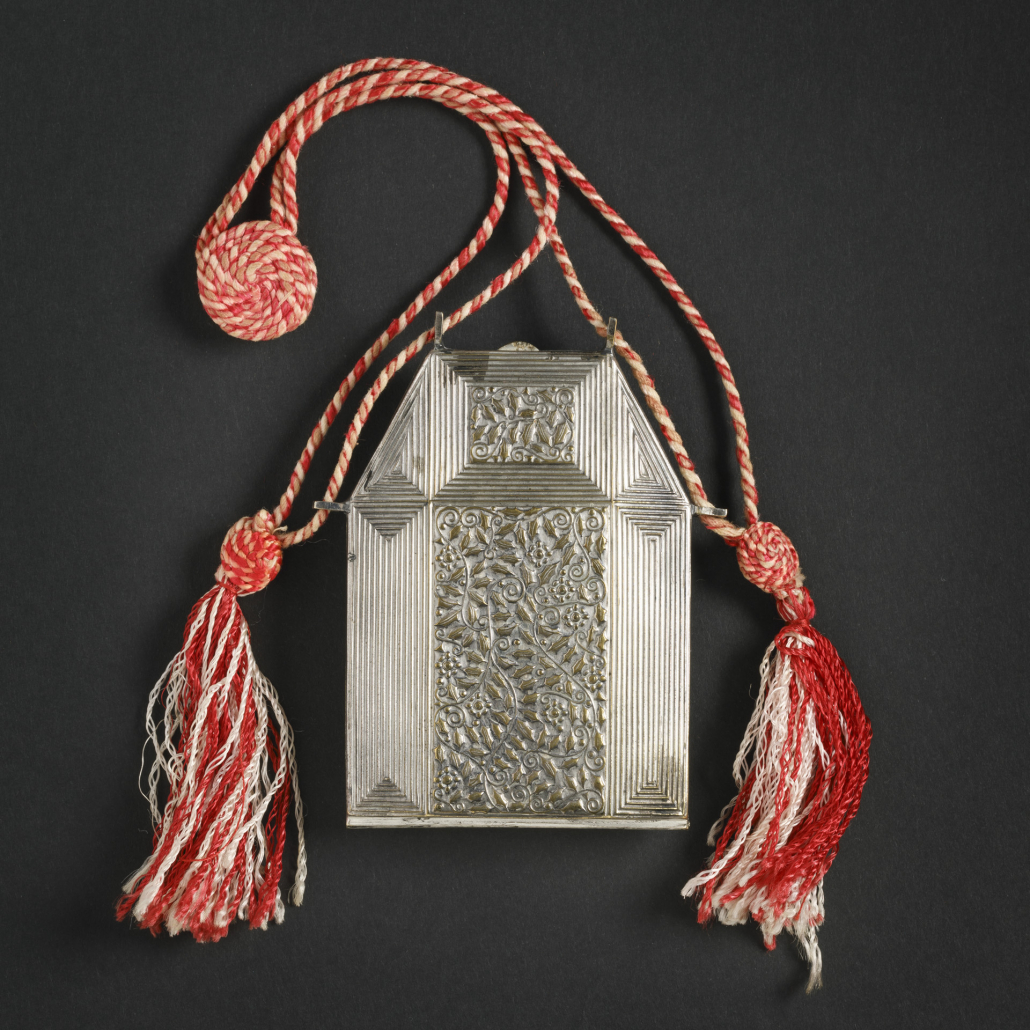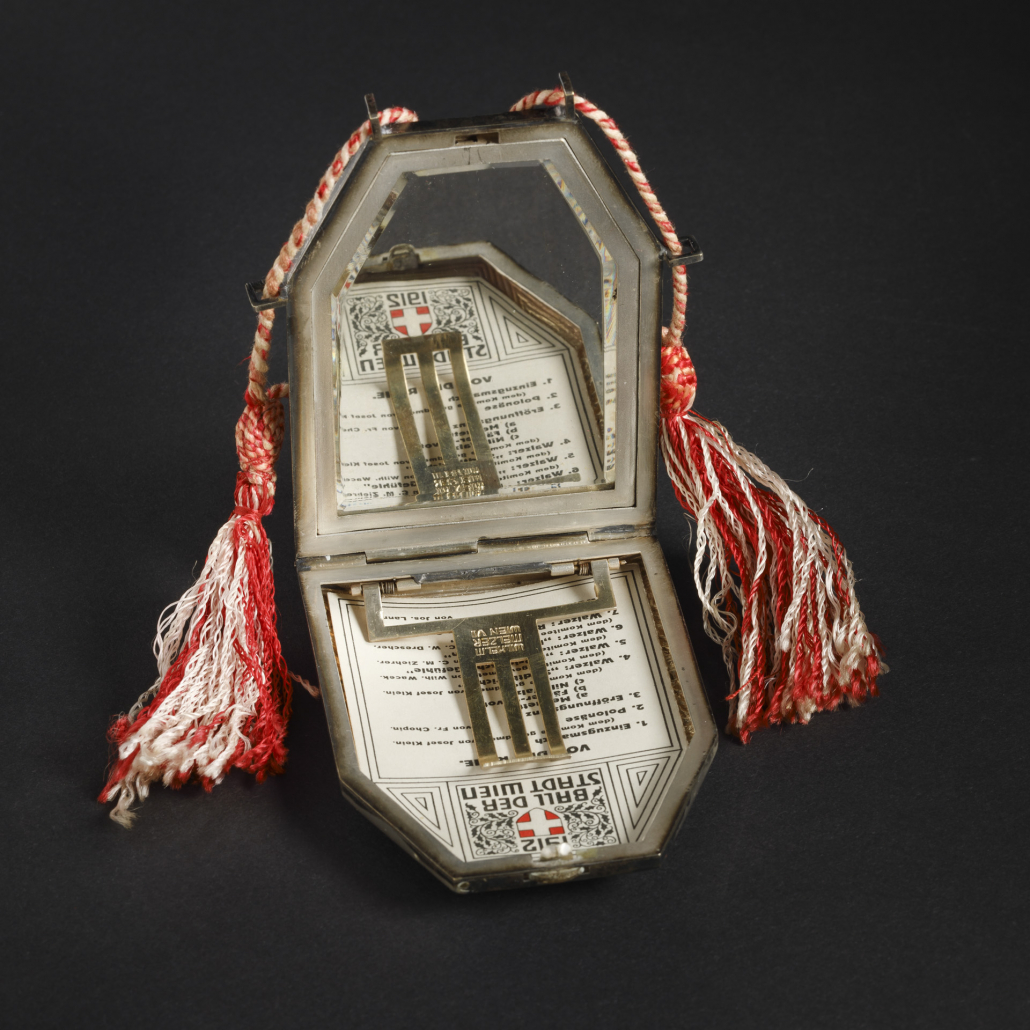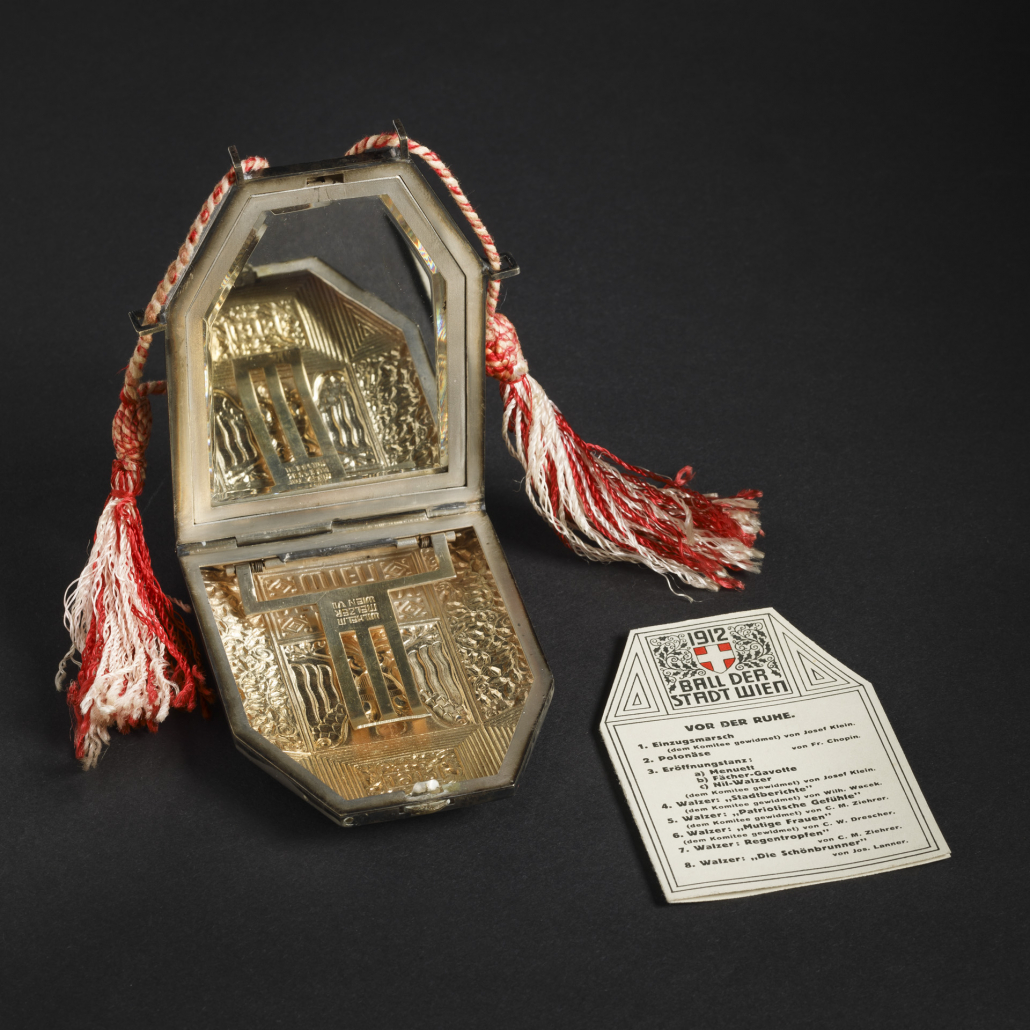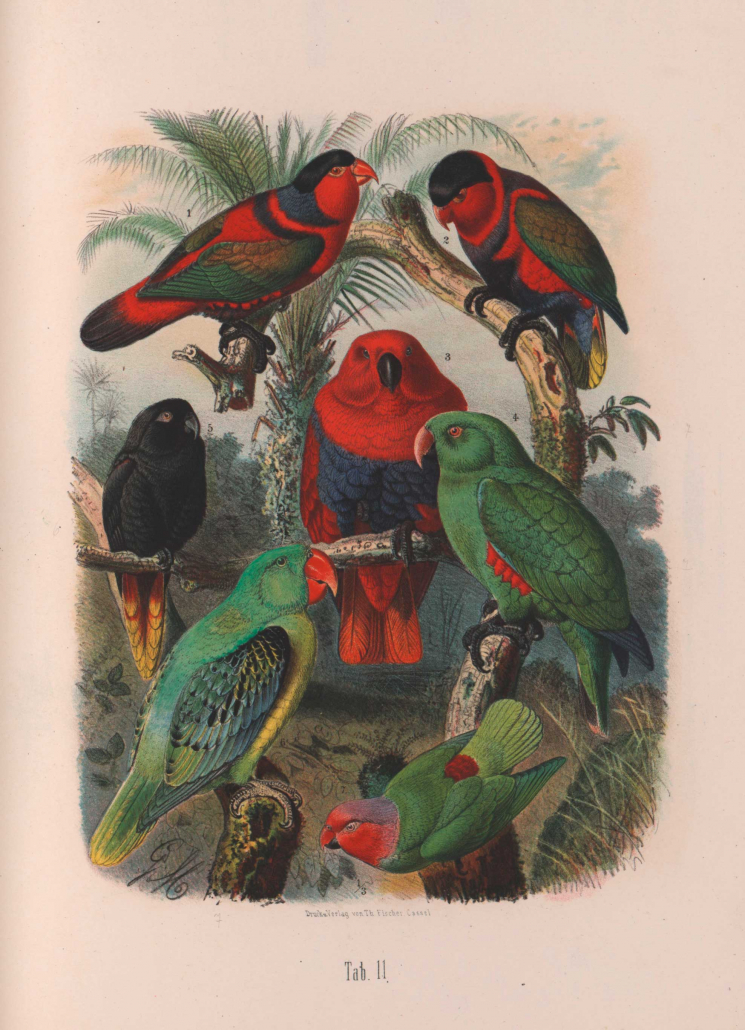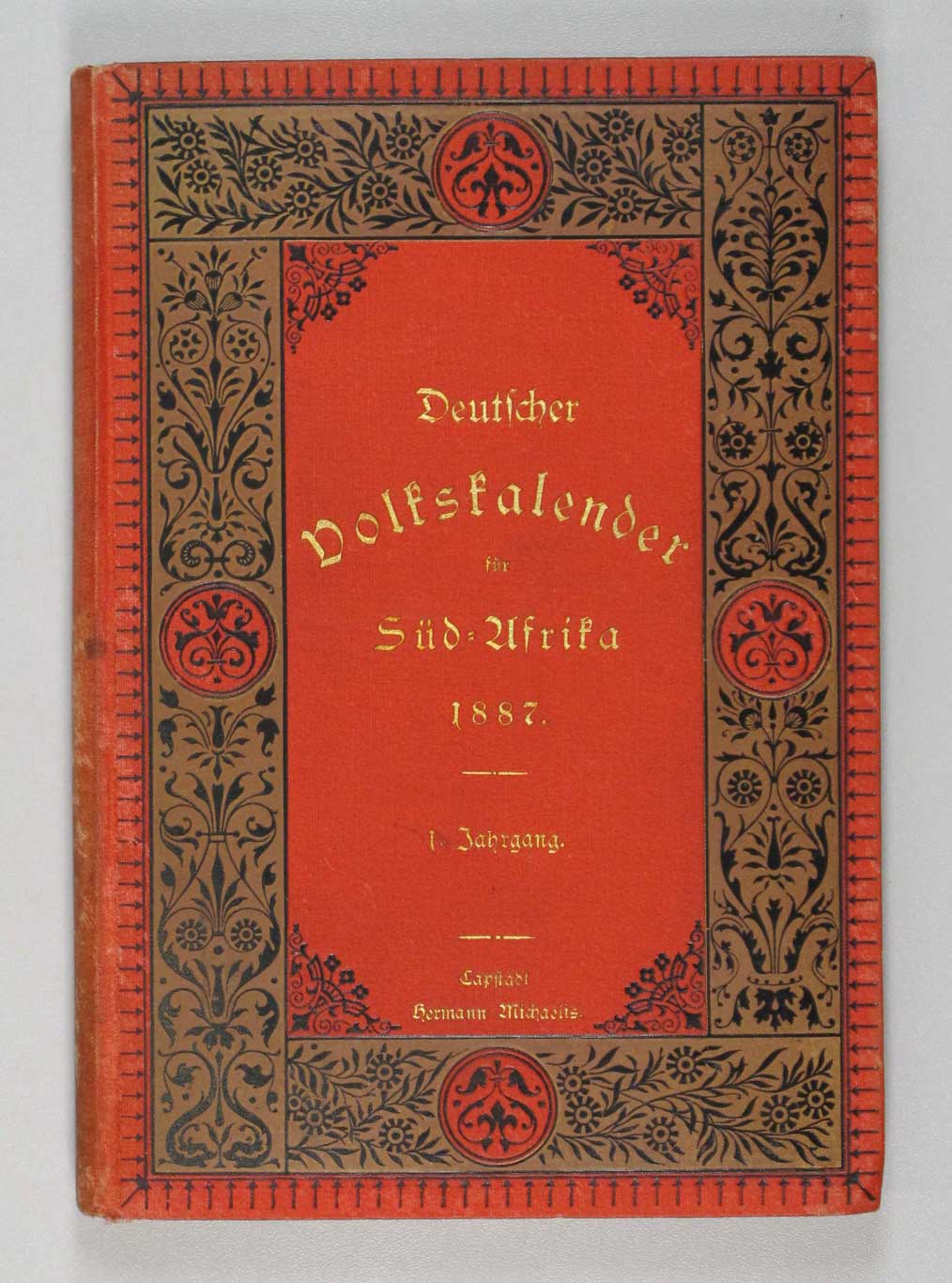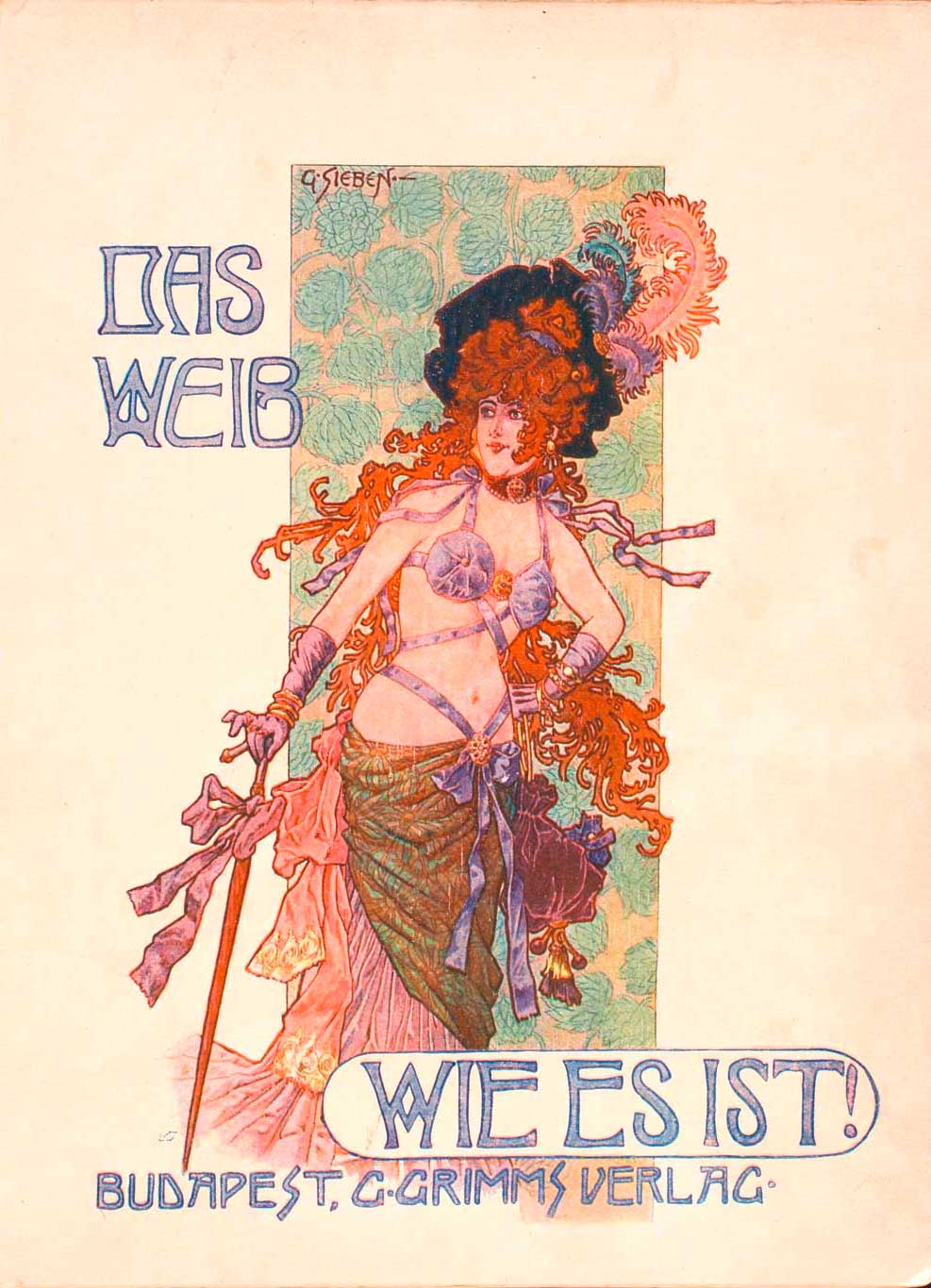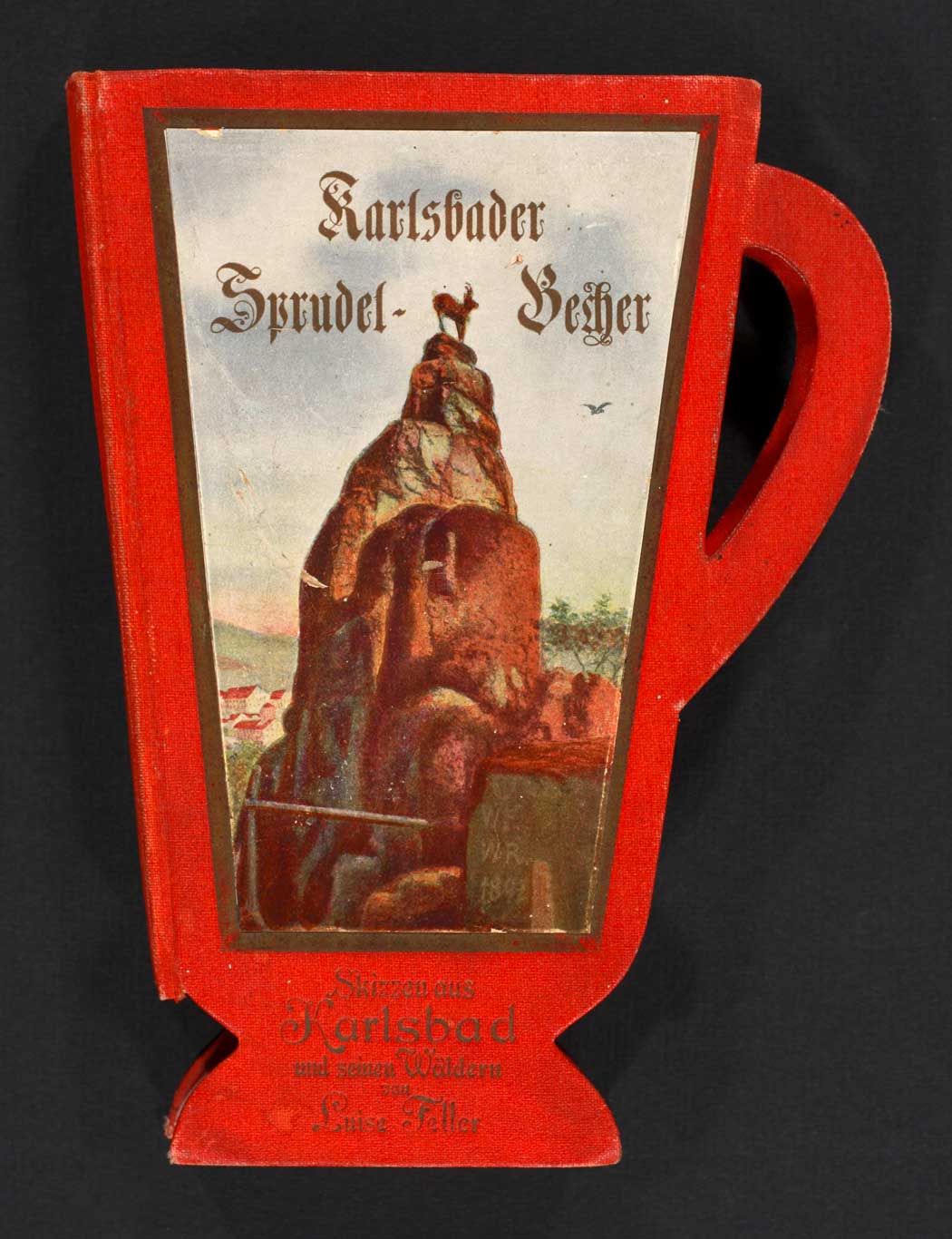22
The acquisition of German printed works
Ball Gifts – Shall we dance?
This elaborately designed ball gift for the Ball of the City of Vienna from 1901 consists of a velvet-covered case with a colourfully enamelled metal mount containing a book with illustrations of the Second Mountain Spring Pipeline. The cover was designed by Koloman Moser. For convenient use, there is a handle with a pin showing the coat of arms of the city of Vienna. The dance card with pencil is inserted into the back of the case. Ball gift Ball der Stadt Wien 1901. With album Im Gebiete der II. Kaiser Franz-Josefs-Hochquellen-Leitung, case designed by Professor K. Moser, text from Leopold Hörmann, composed by Martin Gerlach, Wien 1901. SBB-PK / Hagen Immel.
On the occasion of a ball, the host offered this ball gift as a souvenir to the ladies attending. The original purpose of the ball gift was to keep the unmarried lady’s dance card for the evening. Ball gifts could be little artworks of their own and their content was related to the host. They were particularly popular in Viennese ball culture.
The tradition of ball gifts reached its peak at the end of the 19th and the beginning of the 20th centuries and unfortunately faded with the deprivations of World War I. The type and design of the ball gifts was chosen by the host of the ball and was also dependent on their financial means. They ranged from mass-production, neutral in content, to customised and commissioned objects. The latter even led to the development of a specialised industry in the field of gallantry goods.
The ball gift itself could be a printed work or take on more creative forms, often influenced by Art Nouveau, in combination with a text. In recent years, the Staatsbibliothek zu Berlin has succeeded in acquiring a number of these sought-after treasures from the publication period between 1871 and 1912.
The city of Vienna was a centre of ball culture with various ball events, which were no longer reserved for the nobility in the 19th century. The Ball of the City of Vienna was one of the largest social events and took place in the large ballroom of the City Hall from 1890 onwards. The ball gifts were often related to the history of Vienna, for example with illustrations of the opening of the second Mountain Spring Pipeline, which brought drinking water from Styria to Vienna. However, clubs, professional associations (e.g. merchants, railway companies, artists, tradesmen) and military organisations also held balls, and their specific nature was often reflected in the design of the ball gifts.
The dance card
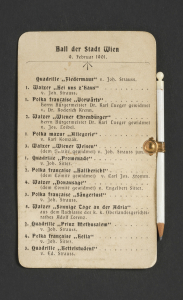 For a long time, the dance card, on which the dances of the evening were listed, was an important part of the ball gift. The gentlemen asked the lady of their choice to reserve a dance, which was noted on the dance card. Therefore, the ladies carried their dance cards with them during the evening, and the ball gifts often provided a loop or hook for easy attachment.
For a long time, the dance card, on which the dances of the evening were listed, was an important part of the ball gift. The gentlemen asked the lady of their choice to reserve a dance, which was noted on the dance card. Therefore, the ladies carried their dance cards with them during the evening, and the ball gifts often provided a loop or hook for easy attachment.
This ball gift for the Ball of the City of Vienna in 1912 is a make-up mirror with the dance card inserted behind a clip on cords with tassels and a hook. Ball gift Ball der Stadt Wien 1912, produced by Wilhelm Melzer Wien VII., Wien 1912. SBB-PK / Hagen Immel
The acquisition program of
German printed works
In the Arbeitsgemeinschaft Sammlung Deutscher Drucke (Consortium for the Collection of German Printed Works) six German libraries collaborate with the aim of building a comprehensive collection of all printed works published in German-speaking countries. The participating libraries are responsible for specific periods and the result will be a distributed national library.
The Staatsbibliothek zu Berlin covers the publication years from 1871 to 1912 (sheet music: 1801 to 1945, newspapers and maps: 1801 to 1912), which was a period of intensive book production. The library collects all material published in German language, regardless of where it was published, and also all material printed in the former German Reich.
Books published between 1871 and 1912 and being currently acquired by the Staatsbibliothek zu Berlin are typically first editions of scientific and technical works as well as numerous small works such as publications from (industrial) companies, which only had a small circulation. In addition to belles-lettres, mass produced contemporary literature, such as so-called non-serious fiction, is also purchased. Furthermore, it focuses on fine press books, which show the development of book illustration and typography during this epoch, such as books with special bindings.
Images of birds from faraway regions by the explorer Anton Reichenow, 1883. SBB-PK / Fotostelle. CC BY-NC-SA 4.0
Deutscher Volkskalender für Südafrika, ed. by G.W. Wagener, 1887-1889. SBB-PK / Fotostelle. CC BY-NC-SA 4.0
Adolph Kohut: Das Weib wie es ist, 1903. SBB-PK / Fotostelle. CC BY-NC-SA 4.0
Karlsbader Sprudelbecher from Luise Feller, around 1905. SBB-PK / Fotostelle. CC BY-NC-SA 4.0


